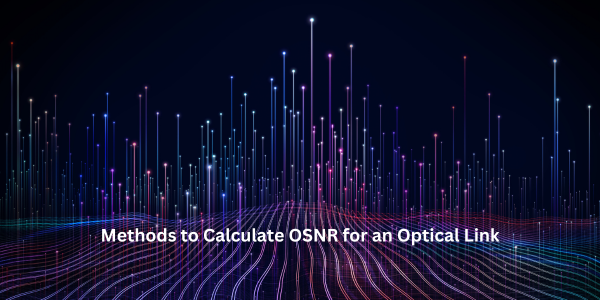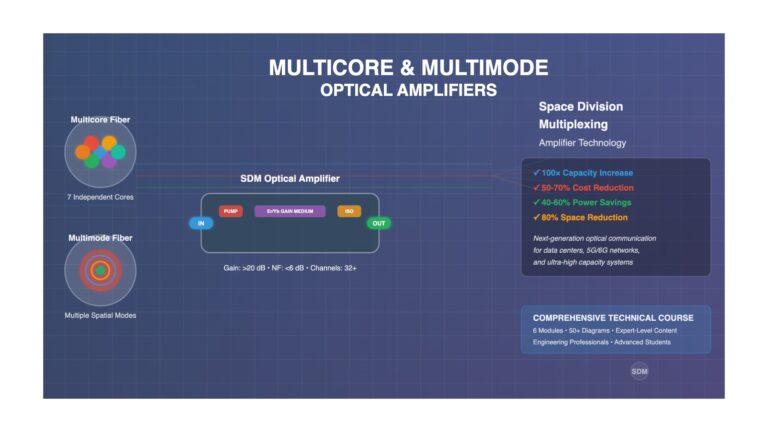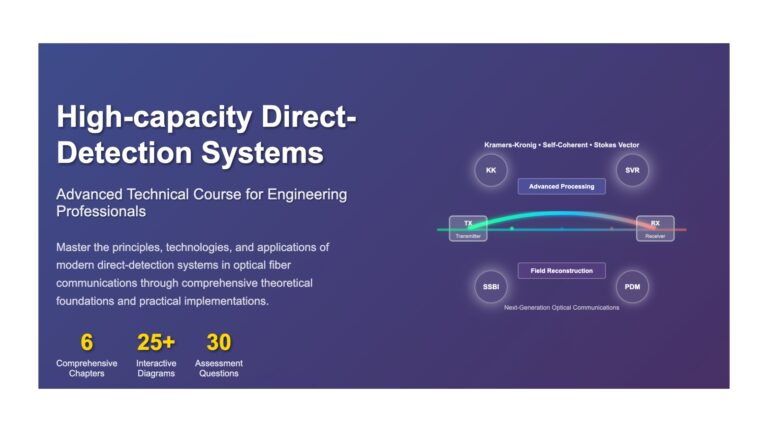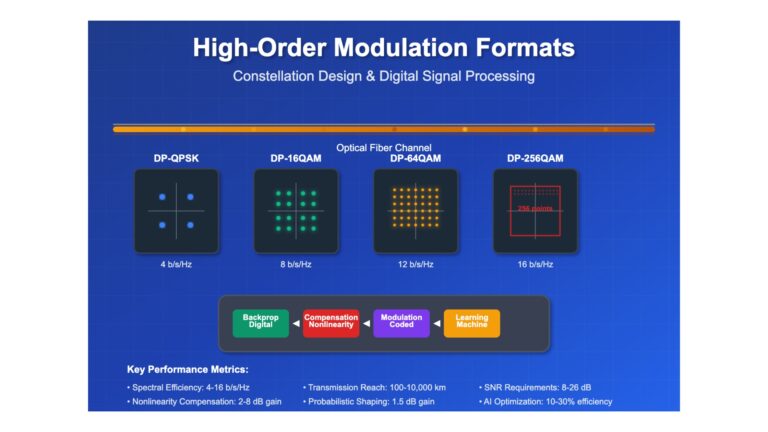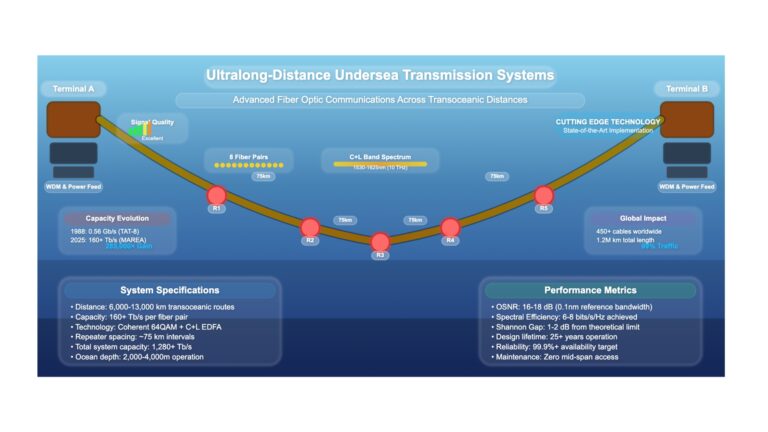Description
Curriculum
Instructor
Course Overview
This comprehensive course covers the fundamental concepts and advanced methods for calculating Optical Signal-to-Noise Ratio (OSNR) in optical communication links. By the end of this course, you will be able to understand, analyze, and calculate OSNR for various optical network configurations.
Learning Objectives
After completing this course, you will be able to:
- Define and explain the concept of OSNR and its importance in optical communications
- Identify different sources of noise in optical links
- Apply various methods to calculate OSNR in single-span and multi-span optical links
- Analyze the impact of different network components on OSNR
- Implement practical OSNR measurements and troubleshooting techniques
Prerequisites
- Basic understanding of fiber optic communications
- Familiarity with fundamental concepts of signal processing
- Basic knowledge of logarithmic calculations and dB units
- Understanding of basic optical network components
Course Duration
- Total Learning Time: 15 hours
- 5 Modules
- 3 Practical Assignments
- 1 Final Assessment
There are no items in the curriculum yet.
Call to a member function get_id() on bool
Review
Courses you might be interested in
Advanced Technologies
Learning Objectives Understand the capacity limitations of conventional single-mode fiber systems Analyze the benefits and challenges of space division multiplexing approaches Compare multicore fiber (MCF) and multimode fiber (MMF) implementations...
-
42 Lessons
Free
Advanced Technologies
Learning Objectives Understand the fundamental principles of direct-detection optical communication systems Compare direct-detection systems with coherent detection systems Identify key applications and advantages of direct-detection technology Analyze the basic architecture...
-
51 Lessons
Free
Advanced Technologies
Learning Objectives Understand the basic principles of optical fiber communication systems Analyze the fundamental limitations in optical transmission Explain the role of digital signal processing in modern optical systems...
-
53 Lessons
Free
Advanced Technologies
Learning Objectives After completing this chapter, you should be able to: Explain the historical development and significance of undersea transmission systems Identify the key components and architecture of modern undersea...
-
44 Lessons
Free

